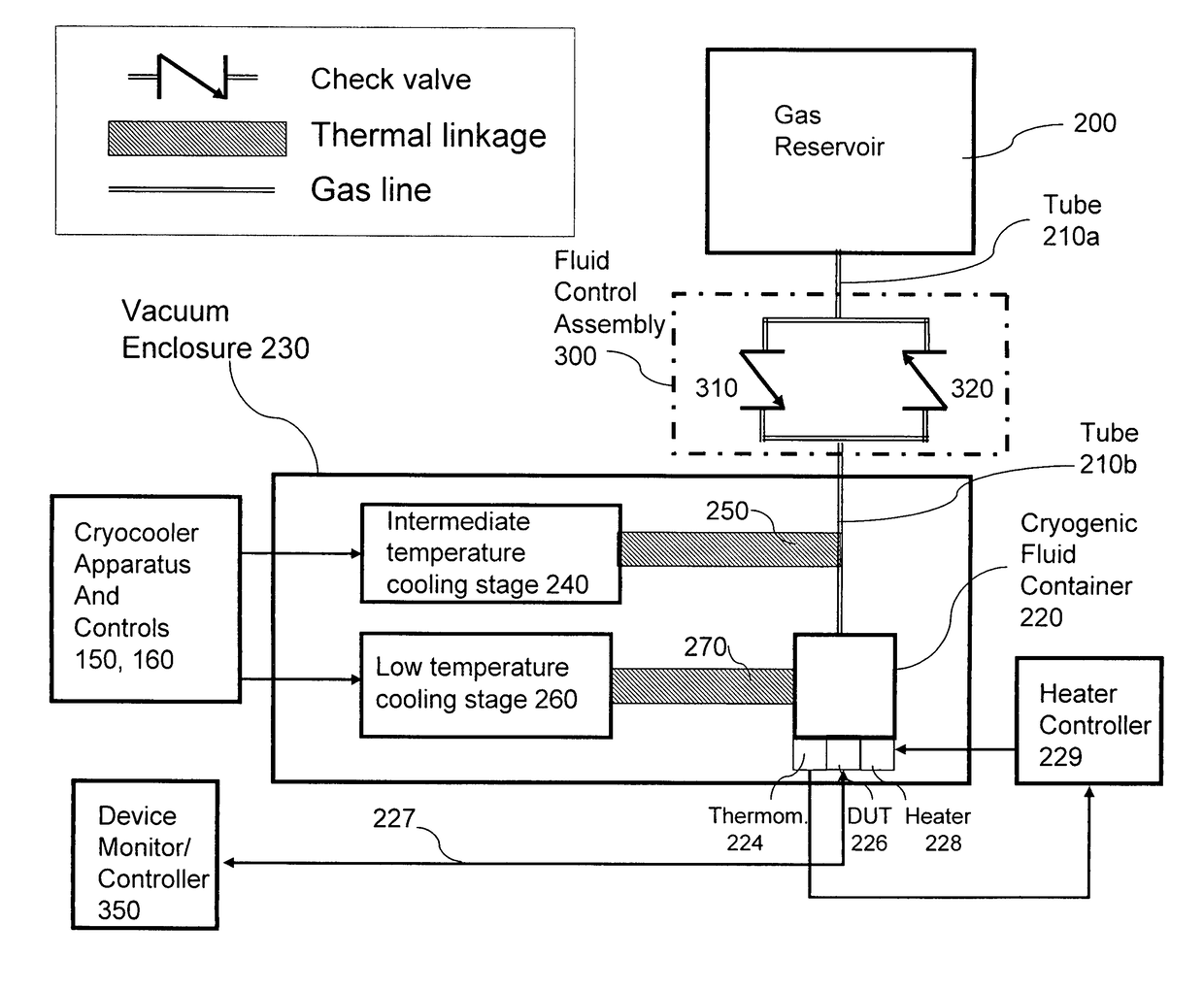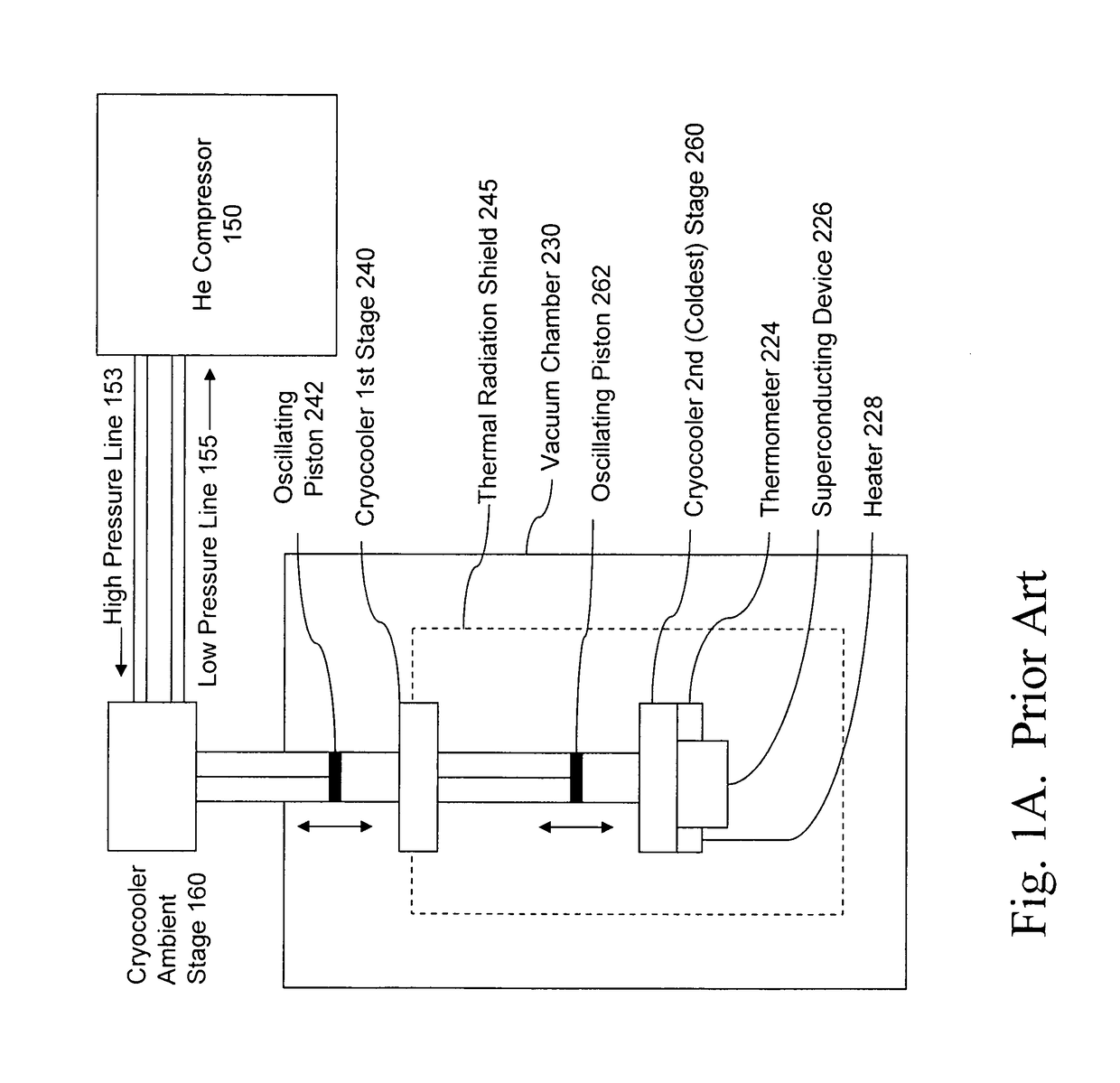Cryogenic system with rapid thermal cycling
a cryogenic system and rapid technology, applied in the direction of domestic cooling apparatus, container discharge methods, superconducting magnets/coils, etc., can solve the problems of temperature oscillation, low cooling efficiency, and low cooling efficiency of the system, so as to reduce the available cooling power, slow down the cooling process, and accelerate the cooling process
- Summary
- Abstract
- Description
- Claims
- Application Information
AI Technical Summary
Benefits of technology
Problems solved by technology
Method used
Image
Examples
Embodiment Construction
[0034]FIG. 3 shows that, in systems embodying the invention, the prior art thermal damper system consisting of a gas reservoir 200 and a cryogenic container 220 is modified with a fluid control assembly (e.g., 300) to provide improved cool down performance when the cryo container is subjected to thermal cycling. As shown in FIG. 3, a fluid control assembly (e.g., 300) inserted in the gas / fluid line connecting a cryogenic container (e.g., 220) with a gas reservoir (e.g., 200).
[0035]Reservoir 200, designed to hold a volume of gas (e.g., He), is typically maintained at room temperature. It is coupled via a first tube 210a, (which may also be denoted as a conduit, (which need not be a capillary tube) to one side (arbitrarily also referred to as the “top” side) of a fluid control assembly 300. The other side (arbitrarily referred to as the “bottom” side) of fluid control assembly 300 is coupled via a second tube 210b (which may also be denoted as a conduit) to container 220 which is suit...
PUM
| Property | Measurement | Unit |
|---|---|---|
| cracking pressure Pc1 | aaaaa | aaaaa |
| temperatures | aaaaa | aaaaa |
| temperatures | aaaaa | aaaaa |
Abstract
Description
Claims
Application Information
 Login to View More
Login to View More - R&D
- Intellectual Property
- Life Sciences
- Materials
- Tech Scout
- Unparalleled Data Quality
- Higher Quality Content
- 60% Fewer Hallucinations
Browse by: Latest US Patents, China's latest patents, Technical Efficacy Thesaurus, Application Domain, Technology Topic, Popular Technical Reports.
© 2025 PatSnap. All rights reserved.Legal|Privacy policy|Modern Slavery Act Transparency Statement|Sitemap|About US| Contact US: help@patsnap.com



